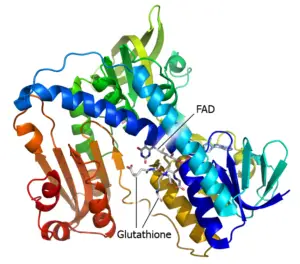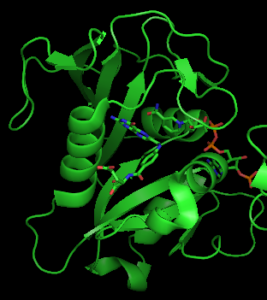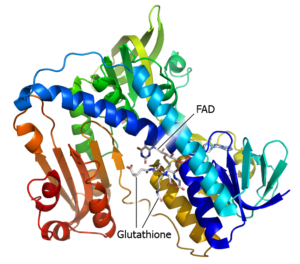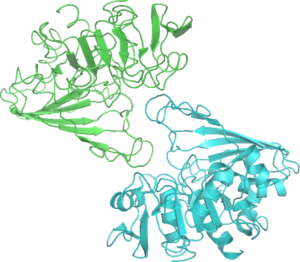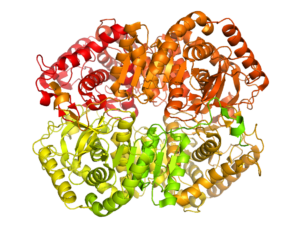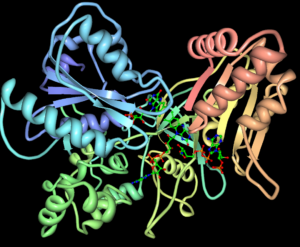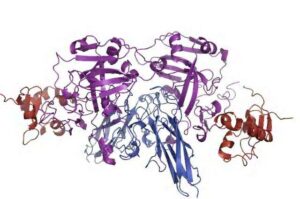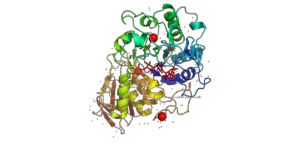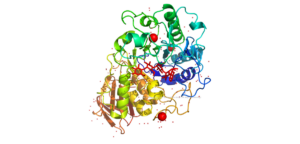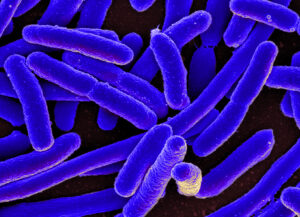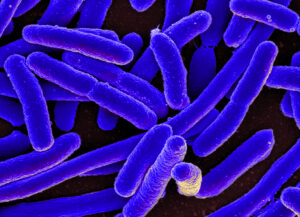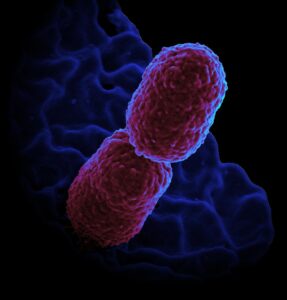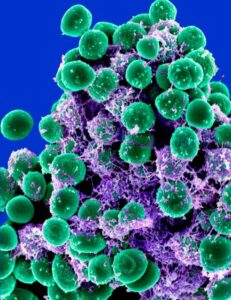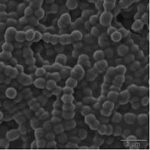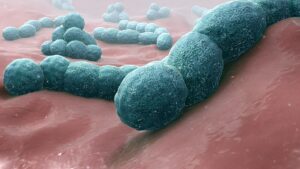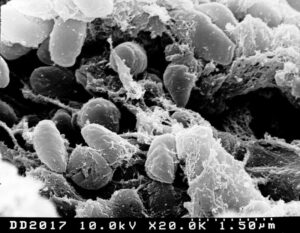Bacteria, like many other living organisms, rely on the fundamental metabolic pathway of glycolysis to generate energy and essential metabolic intermediates. Glycolysis, a central catabolic process, involves the conversion of glucose into pyruvate, yielding ATP and NADH in the process. This pathway is a crucial component of cellular respiration and plays a vital role in the energy metabolism of bacteria.
Glycolysis in Bacteria: An Overview
Glycolysis is a ubiquitous metabolic pathway found in the majority of bacteria, serving as the primary route for glucose catabolism. During glycolysis, glucose is broken down into two molecules of pyruvate, generating a net of 2 ATP and 2 NADH molecules. This process occurs in the cytoplasm of bacterial cells and is the first step in the larger metabolic network that includes the tricarboxylic acid (TCA) cycle and oxidative phosphorylation.
Enzymes Involved in Bacterial Glycolysis
Glycolysis in bacteria is catalyzed by a series of enzymes that facilitate the stepwise conversion of glucose to pyruvate. The key enzymes involved in this pathway include:
- Hexokinase: Catalyzes the phosphorylation of glucose to glucose-6-phosphate.
- Phosphoglucose isomerase: Converts glucose-6-phosphate to fructose-6-phosphate.
- Phosphofructokinase: Phosphorylates fructose-6-phosphate to fructose-1,6-bisphosphate.
- Aldolase: Cleaves fructose-1,6-bisphosphate into two triose phosphates, glyceraldehyde-3-phosphate and dihydroxyacetone phosphate.
- Glyceraldehyde-3-phosphate dehydrogenase: Oxidizes glyceraldehyde-3-phosphate to 1,3-bisphosphoglycerate, generating NADH.
- Phosphoglycerate kinase: Transfers a phosphate group from 1,3-bisphosphoglycerate to ADP, producing ATP and 3-phosphoglycerate.
- Phosphoglycerate mutase: Converts 3-phosphoglycerate to 2-phosphoglycerate.
- Enolase: Dehydrates 2-phosphoglycerate to phosphoenolpyruvate.
- Pyruvate kinase: Catalyzes the conversion of phosphoenolpyruvate to pyruvate, generating ATP.
Regulation of Glycolysis in Bacteria
Bacterial glycolysis is subject to various regulatory mechanisms to ensure efficient energy production and maintain metabolic homeostasis. Some key regulatory mechanisms include:
- Allosteric regulation: Certain glycolytic enzymes, such as phosphofructokinase and pyruvate kinase, are regulated by allosteric effectors, which can either activate or inhibit their activity based on the cellular energy status.
- Transcriptional regulation: The expression of glycolytic genes can be modulated by transcriptional regulators, allowing bacteria to adapt their glycolytic capacity to environmental conditions and nutrient availability.
- Post-translational modifications: Glycolytic enzymes can be subject to various post-translational modifications, such as phosphorylation, acetylation, or ADP-ribosylation, which can alter their activity and regulate the flux through the glycolytic pathway.
- Metabolite sensing: Bacteria can sense the availability of key glycolytic intermediates, such as fructose-1,6-bisphosphate or pyruvate, and use this information to fine-tune the activity of glycolytic enzymes and the overall flux through the pathway.
Glycolysis in Bacterial Metabolism

Glycolysis plays a central role in the overall metabolism of bacteria, serving as a hub for various metabolic pathways and providing essential precursors for biosynthesis.
Coupling of Glycolysis with Other Metabolic Pathways
Glycolysis is closely integrated with other metabolic pathways in bacteria, including:
- Tricarboxylic acid (TCA) cycle: The pyruvate generated from glycolysis can be further oxidized in the TCA cycle, generating additional ATP and reducing equivalents (NADH and FADH2) for the electron transport chain.
- Pentose phosphate pathway: Some of the glycolytic intermediates, such as glucose-6-phosphate, can be diverted to the pentose phosphate pathway, which generates NADPH and precursors for nucleotide and amino acid biosynthesis.
- Gluconeogenesis: Under certain conditions, such as growth on non-carbohydrate substrates, bacteria can reverse the glycolytic pathway to synthesize glucose from non-carbohydrate precursors, a process known as gluconeogenesis.
Metabolic Flexibility of Bacteria
Bacteria exhibit remarkable metabolic flexibility, allowing them to adapt their glycolytic capacity and energy metabolism to various environmental conditions and nutrient sources. This flexibility is crucial for their survival and proliferation in diverse ecological niches.
For example, some bacteria can switch between glycolysis and gluconeogenesis, depending on the available carbon sources. This metabolic flexibility is often observed in bacteria like Escherichia coli, which can grow on glucose as well as acetate or other non-carbohydrate substrates.
Quantitative Analysis of Glycolysis in Bacteria
Advances in experimental techniques and computational modeling have enabled researchers to obtain quantitative data on the enzyme and metabolite abundances in bacterial glycolysis and gluconeogenesis.
Coarse-Grained Modeling of Glycolysis and Gluconeogenesis
A coarse-grained model of glycolysis and gluconeogenesis in E. coli has been developed and calibrated using published metabolite and proteomics data. This model has provided valuable insights into the reorganization of metabolism under different growth conditions, such as glucose and acetate as sole carbon sources.
The model was able to reach distinct steady states for glycolytic and gluconeogenic conditions, demonstrating the ability to capture the metabolic switches between these two pathways. Despite the simplifications of the metabolic and regulatory networks, the model was found to well-describe the reorganization of metabolism, highlighting the importance of understanding the underlying biochemical constraints and flux sensing mechanisms.
Experimental Techniques for Monitoring Glycolysis
Various experimental techniques have been employed to quantify glucose uptake, lactate excretion, and the flux through glycolytic and related metabolic pathways in bacterial cultures. These techniques include:
- Glucose uptake and lactate excretion measurements: The rates of glucose uptake and lactate excretion can be determined by analyzing the concentrations of these metabolites in the culture medium over time.
- Stable isotope tracers: Glucose tracers, such as [U-13C 6]-glucose, [1,2-13C 2]-glucose, [2-13C 1]-glucose, and [5-3H]-glucose, can be used to measure the flux through glycolysis and related pathways with varying degrees of detection precision.
- Metabolomics and proteomics: Advanced analytical techniques, such as mass spectrometry, can be employed to quantify the abundances of glycolytic enzymes and metabolites, providing a comprehensive view of the metabolic state of bacterial cells.
These quantitative approaches, combined with computational modeling, have enabled researchers to gain a deeper understanding of the regulation and dynamics of glycolysis in bacteria, as well as its integration with other metabolic pathways.
Conclusion
In summary, bacteria do indeed perform glycolysis, a fundamental metabolic pathway that is crucial for their energy production and biosynthetic processes. Glycolysis in bacteria is a highly regulated process, involving a series of enzymes and subject to various control mechanisms to ensure efficient energy metabolism and adaptation to environmental conditions.
The integration of glycolysis with other metabolic pathways, such as the TCA cycle and gluconeogenesis, highlights the metabolic flexibility of bacteria, allowing them to thrive in diverse ecological niches. Advances in experimental techniques and computational modeling have provided valuable insights into the quantitative aspects of glycolysis in bacteria, paving the way for a deeper understanding of their metabolic dynamics and potential applications in biotechnology and medicine.
References:
- Severin Josef Schink, Dimitris Christodoulou, Avik Mukherjee, Edward Athaide, Viktoria Brunner, Tobias Fuhrer, Gary Andrew Bradshaw, Uwe Sauer, and Markus Basan. Glycolysis-gluconeogenesis switches in Escherichia coli are driven by biochemical constraints of flux sensing. Molecular Systems Biology, 2022.
- Tara TeSlaa and Michael A. Teitell. Techniques to Monitor Glycolysis. PMC, 2022.
- Glycolysis – an overview | ScienceDirect Topics. ScienceDirect, 2022.
- Chitra Thakur and Fei Chen. Linking metabolism to epigenetic reprogramming in stem cells. Seminars in Cancer Biology, 2019.

